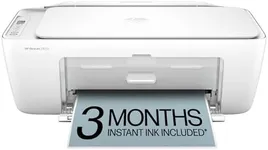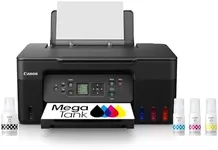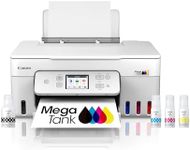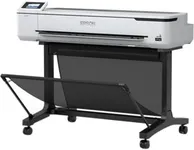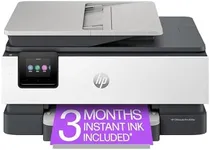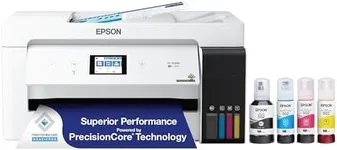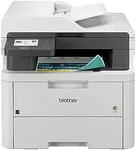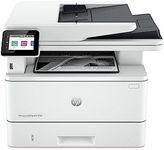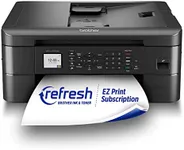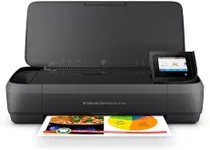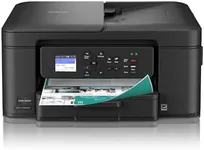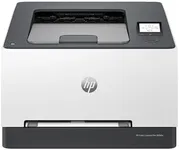Buying Guide for the Best Printers That Can Print On Cardstock
When choosing a printer that can handle cardstock, it's important to consider several key specifications to ensure you get a model that meets your needs. Cardstock is thicker and heavier than regular paper, so not all printers are equipped to handle it. By understanding the key specs and how they relate to your specific requirements, you can make an informed decision and find the best printer for your cardstock printing needs.Paper HandlingPaper handling refers to the printer's ability to manage different types and sizes of paper, including cardstock. This spec is crucial because not all printers can handle the thickness and weight of cardstock. Look for printers that explicitly state they can handle heavy paper or cardstock. Typically, printers that support a higher maximum paper weight (measured in gsm - grams per square meter) are better suited for cardstock. For light to medium cardstock, a printer that supports up to 200 gsm should suffice, while for heavier cardstock, look for models that can handle 300 gsm or more. Consider your specific needs, such as the type of projects you'll be working on, to determine the appropriate paper handling capabilities.
Print QualityPrint quality is measured in DPI (dots per inch) and indicates how sharp and detailed the printed output will be. This is particularly important for cardstock printing, where you might be producing high-quality invitations, business cards, or art prints. Higher DPI values generally mean better print quality. For most cardstock printing, a printer with at least 1200 x 1200 DPI should provide satisfactory results. If you need professional-grade prints, look for printers with even higher DPI, such as 2400 x 2400 or more. Consider what you will be printing on the cardstock to determine the level of print quality you need.
Printer TypeThere are two main types of printers to consider: inkjet and laser. Inkjet printers are generally better for high-quality color prints and can handle a variety of paper types, including cardstock. Laser printers, on the other hand, are known for their speed and efficiency, but not all models are suitable for thicker paper. If you need vibrant, high-quality color prints on cardstock, an inkjet printer is likely the better choice. For high-volume printing or if you primarily need black and white prints, a laser printer that supports cardstock might be more appropriate. Think about the type of printing you'll be doing most often to decide which printer type is best for you.
Feeder CapacityFeeder capacity refers to the number of sheets the printer can hold at one time. This is important for cardstock printing because thicker paper often means fewer sheets can be loaded at once. A printer with a higher feeder capacity can save you time and effort, especially if you plan to print in bulk. For occasional cardstock printing, a standard feeder capacity might be sufficient. However, if you frequently print large quantities, look for a printer with a higher capacity or one that offers a manual feed option for thicker media. Consider how often and how much you will be printing to determine the right feeder capacity for your needs.
Connectivity OptionsConnectivity options determine how you can connect your printer to your devices. Common options include USB, Wi-Fi, Ethernet, and Bluetooth. This spec is important because it affects the convenience and flexibility of your printing setup. For home use, Wi-Fi connectivity allows you to print wirelessly from multiple devices, which can be very convenient. For office settings, Ethernet might be preferred for a stable and fast connection. If you plan to print directly from mobile devices, look for printers with Bluetooth or Wi-Fi Direct capabilities. Consider your typical workflow and how you prefer to connect your devices to choose the right connectivity options.
